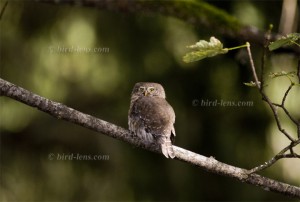 The stars sparkle from the cloudless firmament. In the dark the hike up to the mountain started. The markings lead you via forest paths and logging trails. After about 2, 5 hours and 4 km you can start the final spurt to the summit. When you arrive, you can feel the coolness of the early morning. A light wind is blowing. There is nothing to be heard except for the singing of the thrushes deep down in the forest. The view up here at the summit of the Waldstein is absolutely stunning. Not far are the peaks of the Schneeberg and the Ochsenkopf. Both are surrounded by a white misty sea. Only the peaks emerge from this sea. In the far distance are the heights of the Frankenwald.
The stars sparkle from the cloudless firmament. In the dark the hike up to the mountain started. The markings lead you via forest paths and logging trails. After about 2, 5 hours and 4 km you can start the final spurt to the summit. When you arrive, you can feel the coolness of the early morning. A light wind is blowing. There is nothing to be heard except for the singing of the thrushes deep down in the forest. The view up here at the summit of the Waldstein is absolutely stunning. Not far are the peaks of the Schneeberg and the Ochsenkopf. Both are surrounded by a white misty sea. Only the peaks emerge from this sea. In the far distance are the heights of the Frankenwald.
The majority of the way passes through spruce forest. This is also the habitat of the Eurasian Pygmy-Owl (Glaucidium passerinum). In addition to the spruces, there are many trees from Beech (Fagus sylvatica) Sycamore Maple (Acer pseudoplatanus) and Wych Elm (Ulmus glabra), which further enhance habitat quality for typical montane species. The summit area of the Grosse Waldstein is very scenic. Very impressive are the many high granite towers. Unlike the neighboring mountains, the rocks have not collapsed here. Furthermore, the observation deck on the summit offers an impressive view over the Fichtelgebirge.
Berlin is located in the middle of the northern German-Polish plain. In order to experience montane forests with their very own bird communities, you have to go either to the Czech Republic or Poland or to Bavaria. One of the next mountain ranges is the Fichtelgebirge, which can be reached via the motorway A9 from Berlin in roughly 4 hours (about 370 km). Before the fall of the wall, the Fichtelgebirge laid on the edge of the western world, in the so-called Zonenrandgebiet (zone edge area). It was a secluded, forest-rich and low-populated mountain range in the north of Bavaria already before the Iron Curtain was drawn. However, the unspoilt mountain region offers a wealth of interesting motifs with excellent but rarely seen birds, fascinating monuments monoliths and deep forests.
The summit of the Waldstein is particularly interesting for nature photographers. On the one hand, impressive granite towers can be admired here, while on the other hand, the viewing rondelle on the summit offers an impressive view over the Fichtelgebirge. In the case of inversion weather conditions in September or October, it is especially worth to hike up the hill in the morning when the valleys disappeared in the fog.
For visitors arriving from a greater distance, an overnight stay in the Waldstein-Haus, below the summit, is an option. Then you are already on the spot to enjoy the hike and the views in the early morning before the crowds arrive. As a further tourist spot, the Kösseine is recommended. There is also a mountain guest house, where you can spend the night and enjoy the first morning light. Even if the mountains are not necessarily impressive, the winters with low temperatures and considerable snowmasses can be very strict in “Bavarian Siberia” and provide a very special feeling.
If you are happy, you can discover a Eurasian Pygmy-Owl (Glaucidium passerinum). Curiously, the sparrow’s owl might look down at you. It is always amazing how close you can approach a Eurasian Pygmy-Owl. This little Owl sometimes allow approach of up to 5 meters. The exposure times in the forest are usually quite long. Then it is only at home that you notice that the tiny Pygmy-Owl had obviously not been as still as you had remembered him.
The mountain ranges of the Mittelgebirge in Germany have hardly been able to offer spectacular animal observations. The Fichtelgebirge is no exception in this way. The attraction of this long time remote region in the north-east of Bavaria lies therefore elsewhere. The dark, almost nordic-looking atmosphere of the Fichtelgebirge makes it sensible for the visitor how hard the life of the ancestors in the quarries and tinsmiths must have been.
To cope with the growing demand for top shots of the rarer species of the Palearctic Bird-Lens is keen to enrich the range of pictures of birds not only for the Western Palearctic. Trips to remote places to capture images of rare birds were very successful. The nice images you find in the blog is only a first impression, what you will find in the gallery in the “Picture Shop” very soon. Just give me a message, if bird-lens.com could serve you with an image needed before the new pictures are online.